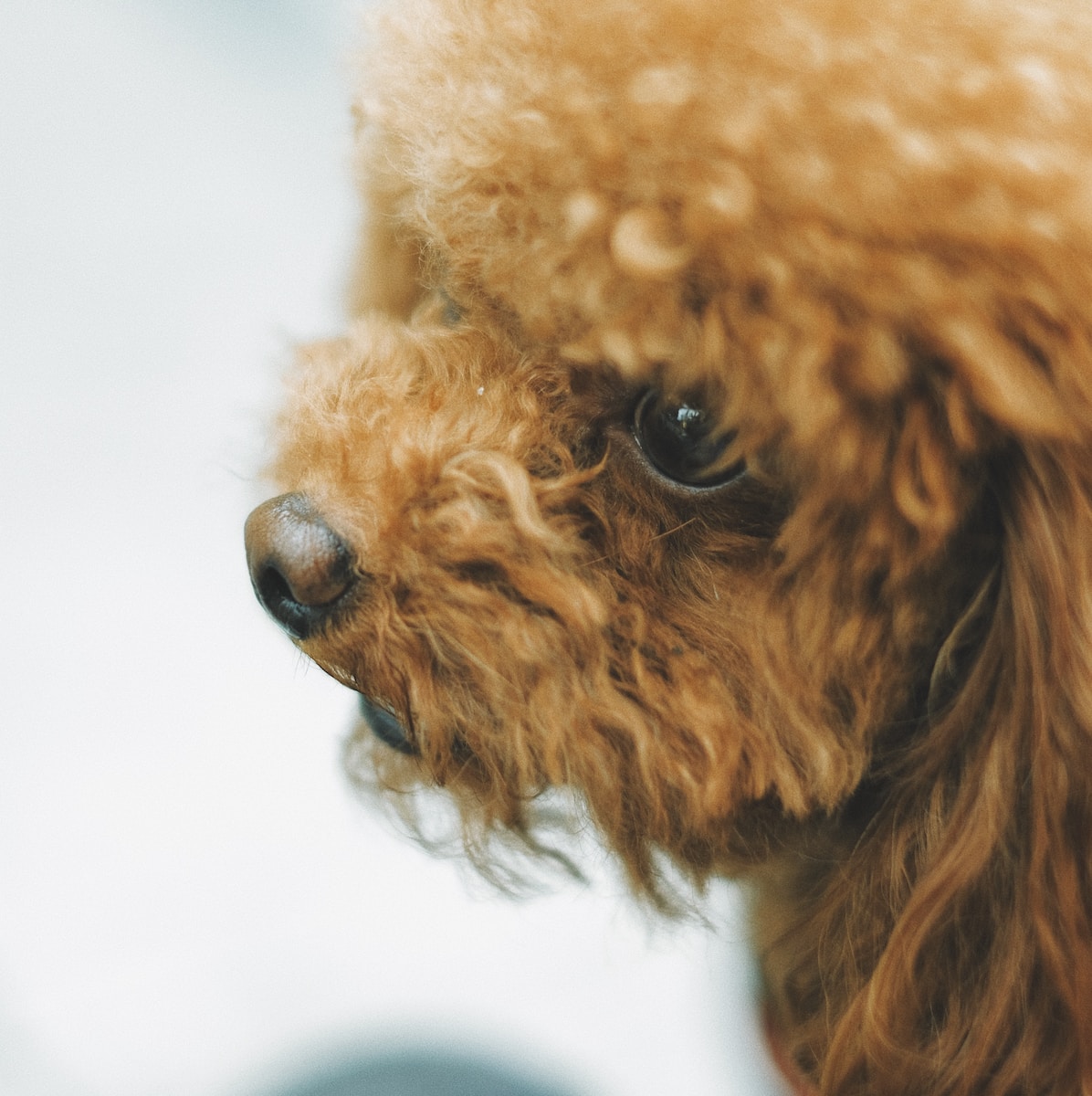This site contains product affiliate links. I may receive a commission if you make a purchase after clicking on one of these links.
Cavapoojournal.com is a participant in the Amazon Services LLC Associates Program, an affiliate advertising program designed to provide a means to earn advertising fees by advertising and linking to Amazon.com.
Other affiliate programs that Cavapoojournal.com participates in are: The Swiftest, Rakuten Advertising, Awin, CJ (Commission Junction), and Partnerize. I may receive a commission if you make a purchase after clicking on one of their links.
Grief in Dogs
Do Cavapoos really grieve? Scientific research suggests that Cavapoos and all dogs go through a grieving process.
A new study revealed for the first time that dogs grieve over the death of someone important to them, like their owner. In the study, 426 dog owners were interviewed whose puppy died while they had another dog in the house. The result? 86 percent stated that their dog exhibited negative behavior following the death of a canine friend.
Dr. Mary Burch, a certified applied animal behaviorist with over 25 years of working with dogs said, “The signs of grieving for both dogs and people can be the same.”
When Do Cavapoos Grieve?
When a Cavapoo’s world flips upside down because someone close to them dies, it shouldn’t be surprising when his zip and energy is traded for sluggishness, sadness, and sorrow.
After all, a person that meant the world to him is no longer in his world. The bond they shared is now shattered.
Cavapoos grieve when there’s instability within their environment.
For example, if a Cavapoo has an elderly owner who enters an assisted living facility or a nursing home, he may show signs of sadness and grief.
Another scenario: When a teenager leaves home to go to college, his canine buddy may sulk and grieve.
Cavapoos also grieve when they’re separated from a fellow pet, whether the separation is because of death or rehoming.
It’s easy to detect a grieving Cavapoo. His personality is altered. He’s not himself! He’s an entirely different dog.
He may trot up to the door when he hears the garage door go up, thinking that his owner will appear.
He may also sniff around the house searching for his canine friend. In either case, a grieving Cavapoo is a sad sight!
- Grief in Dogs
- When Do Cavapoos Grieve?
- What are the Signs of a Grieving Cavapoo?
- I’m Not Hungry!
- Playtime is Put on Hold
- He’s No Longer the Socialite (Just Taking a Break)
- Shift in Personality Trait
- Tucking His Tail
- Sleeping More (Much More!)
- Not Drinking Enough Water
- Becomes More Vocal
- “Oops, I Had an Accident”
- Conclusion
- Check out my other articles before you leave my blog! I think you’ll love them!
What are the Signs of a Grieving Cavapoo?
I’m Not Hungry!

Cavapoos are not that much different than their owners.
When we suffer the passing of a loved one, food is the last thing on our minds. Even our favorite dish loses its appeal. We’re not hungry!
Grieving Cavapoos may dabble in their food bowl or outright refuse to eat. They may begin to lose weight. And due to the lack of nourishment, the high level of energy they normally exude diminishes.
A disinterest in food is normal for grieving Cavapoos. But don’t worry unless your canine family member goes 48 hours without eating. Then you should contact your veterinarian.
What Can I Do to Encourage My Cavapoo to Eat?
Here are a few suggestions: It’s not recommended to change his brand of dog food. He’s already in a vulnerable state. Changing his food could upset his stomach. Instead of changing his food, why not add a little broth to his food to encourage him to eat?
Another tidbit of information: Don’t scold him for not eating. Remember, he’s processing the loss of his owner or a pet brother or sister.
Be patient with your Cavapoo. He’ll return to his peppy self when he’s ready! And then watch out! It’ll be Bon Appetit!
Playtime is Put on Hold

I know from personal experience that Cavapoos are highly energetic! My Opie challenges me to play “see if you can catch me,” when he steals my remote from an end table. He’ll jump up and down like he’s on a set of pogo sticks when I come home from work. I wonder at times if he’s part Kangaroo! And I’m sure that his fellow Cavapoo colleagues are as equally active in their own environment.
But the absence of an owner or a canine buddy can rob the Cavapoo of his playful state. He may act as though his energy has been drained from his little body. He can become withdrawn and disinterested in playing.
What Can I Do to Help Him Recover?
Patiently wait for him to return to his former self. It’s just a matter of time that he’ll recharge and begin to run, jump, and play again. However, if your dog continues to be depressed for an extended amount of time, load him up and carry him to the veterinarian. He may need medical assistance.
He’s No Longer the Socialite (Just Taking a Break)

When we’re going through grief we don’t feel like entertaining or being around friends.
Why should Cavapoos be any different?
Grieving Cavapoos tend to keep to themselves. Socializing is not on their agenda, either with humans or canine friends. So, the “lap dog,” or “Velcro dog” may not live up to his name during this time. He may wander off to another room or spot in the house where he can find solitude.
How to Help?
Let your Cavapoo have his space. Respect his privacy. Give him time. Socialization is in his genes. He’ll eventually begin to warm back up and become the personable pup he once was. There’s really nothing to worry about!
Shift in Personality Trait

Instead of being the lovable puppy that he was from day one, a Cavapoo can become irritable and show signs of anger. His behavioral change can result in damaging furniture, or even worse, biting you!
Should You Permit This Aggressive Behavior?
Of course, you cannot allow your Cavapoo to continue in his destructive mode. Using a stern voice, scold him. Let him know that chewing on furniture and biting the hand that feeds him is not going to be tolerated.
Withhold treats when he engages in aggressive behavior. He’ll think you’re giving your stamp of approval if you give in and feed him his special treat.
Tucking His Tail

We’ve all heard the saying, “tucked tail and run.” Dogs who are grieving don’t wag their tails back and forth. Instead, their tail is tucked between their legs showing emotional distress brought on by the absence of a close human or a canine buddy.
Is There Anything I Can Do?
My suggestion is to hold your pup, talk to him in a calm, encouraging tone, and rub his back. He needs to know that he’s loved and that you’re not going anywhere.
Sleeping More (Much More!)

Another sign of grief in your Cavapoo is that he’s sleeping so much more than he normally does.
Excessive sleeping in adults is indicative of depression. Again, we see the parallel in the animal kingdom.
An adult Cavapoo normally sleeps 15 hours a day (sleeping through the night and taking several naps throughout the day). However, a grieving Cavapoo will sleep even more. If a healthy adult dog sleeps more than 18 hours he may need a visit to his veterinarian. He may feel that there’s no reason for him to participate in his daily routine of activity.
Any Suggestions?
Offer your pup mental stimulation by engaging him in activities. Try doggie games that’ll challenge his thinking and that’ll keep him bright eyed and bushy tailed!
Not Drinking Enough Water

A Cavapoo that’s distressed by grief may lower his water intake. And when we take into consideration that normally the favorite drink for pups is water, that spells dehydration. If a dog is dehydrated, he becomes tired, sleepy, and lifeless.
What’s the Solution?
Make sure your dog’s bowl is full of clean water. Move his bowl to a different area to encourage him to drink.
Becomes More Vocal

A Cavapoo may vocalize grief through a variety of sounds such as: howling, whining, whimpering, and barking. An ASPCA study found that 63% of mourning dogs had an altered vocal pattern. In other words, after a close companion, whether human or canine, passes away and your Cavapoo does the opposite of what he normally would do, that’s an indication that he’s grieving.
An example: Your pup usually barks when the RING doorbell goes off, but now he’s silent.
What Can I Do?
The best approach to use when a dog howls, whines, or whimpers is to simply ignore him. Then, when he decides to quit vocalizing, give him a treat. He’ll learn quickly that verbalizing his vocals isn’t the way for him to go.
“Oops, I Had an Accident”

Another sign of a grieving Cavapoo is when he uses the bathroom on the floor instead of on the pad that was put out for him. Sometimes a Cavapoo may become nervous because of the absence of a close human or canine friend. And the evidence left behind is a deposit on the floor or rug.
The Solution?
The solution is not to rub his nose in the bowel movement. What a grieving pup needs is comfort-not punishment.
Why not take him outside for a short walk, allowing him to get fresh air and a look at nature. He may begin to see things from a different vantage point.
Conclusion
There are two schools of thought when we consider grief and dogs.
The first is that dogs do not experience grief.
The second one is that “Man’s best friend” is a living, breathing organism with emotions. He is not all that different than his owner when it comes to grief.
And I am a believer in the second approach.
Although our canine friends cannot verbalize in human language how they feel, they do communicate their own struggle with grief.
Our responsibility is to learn how grief effects our pups so that we can help them through this difficult ordeal.
How you and I respond to our Cavapoo’s battle with grief will determine to a large degree how long it takes him to return to a normal life.
Our interest and goal are for our Cavapoos to wag their tails again and to wear their smiles. We want them to resume their mischievous ways.
I hope that my article is helpful to you and your Cavapoo if grief makes an appearance.
-Howell




